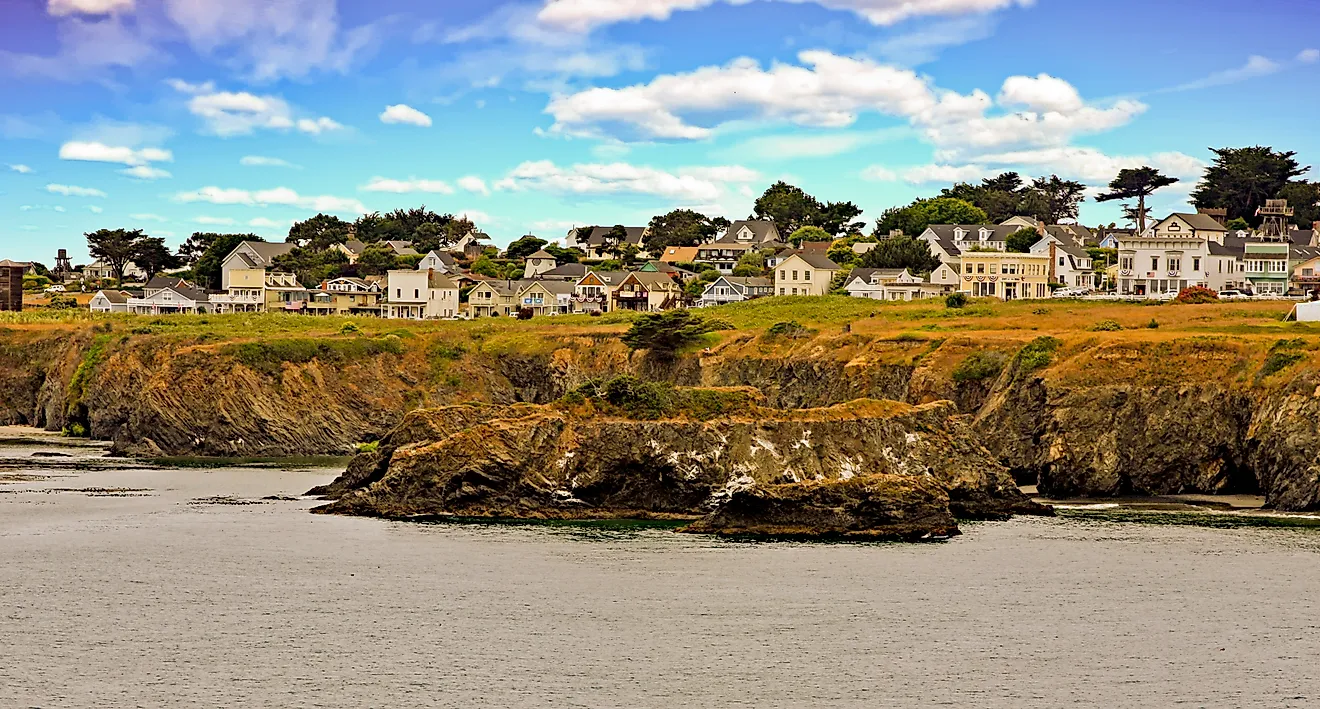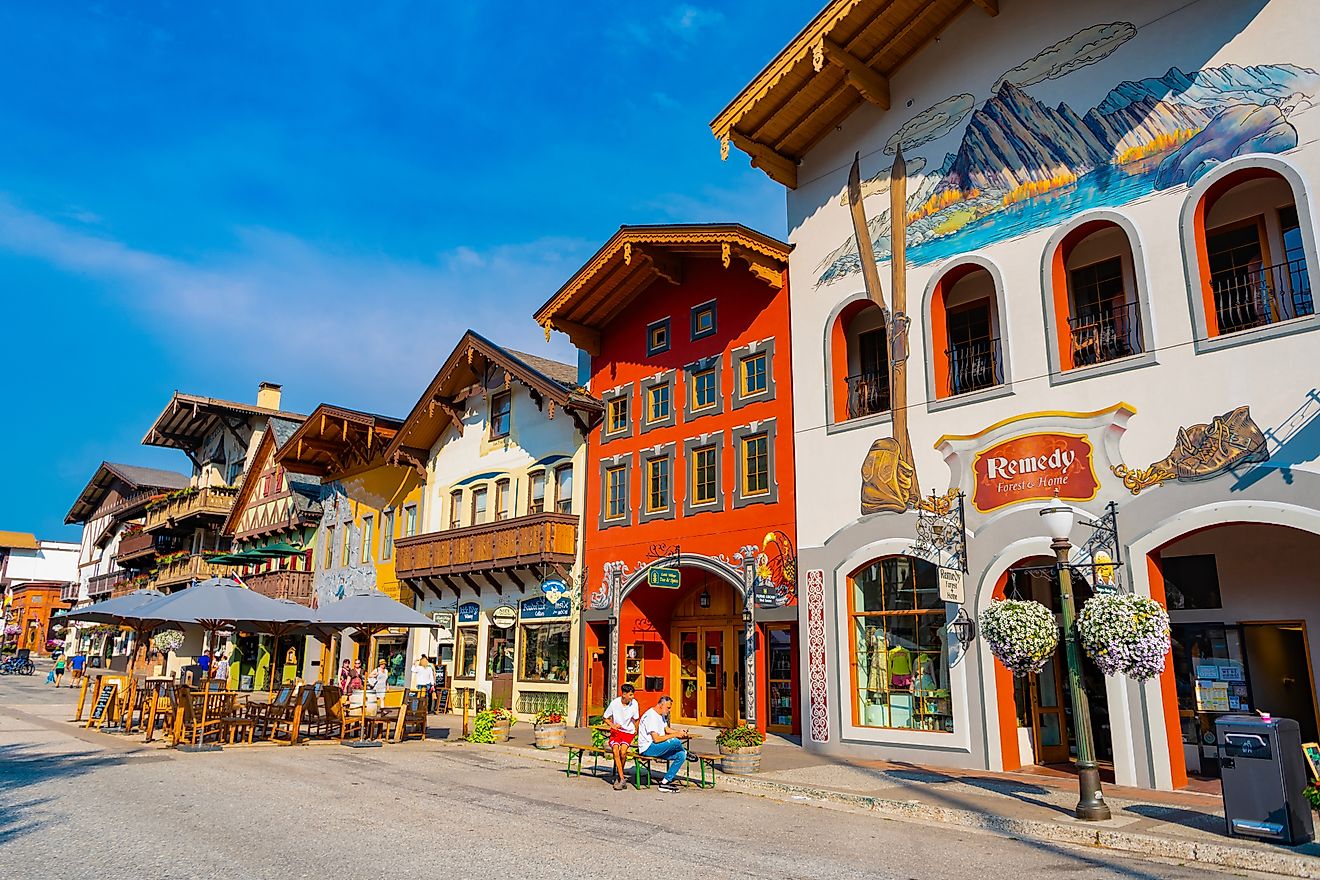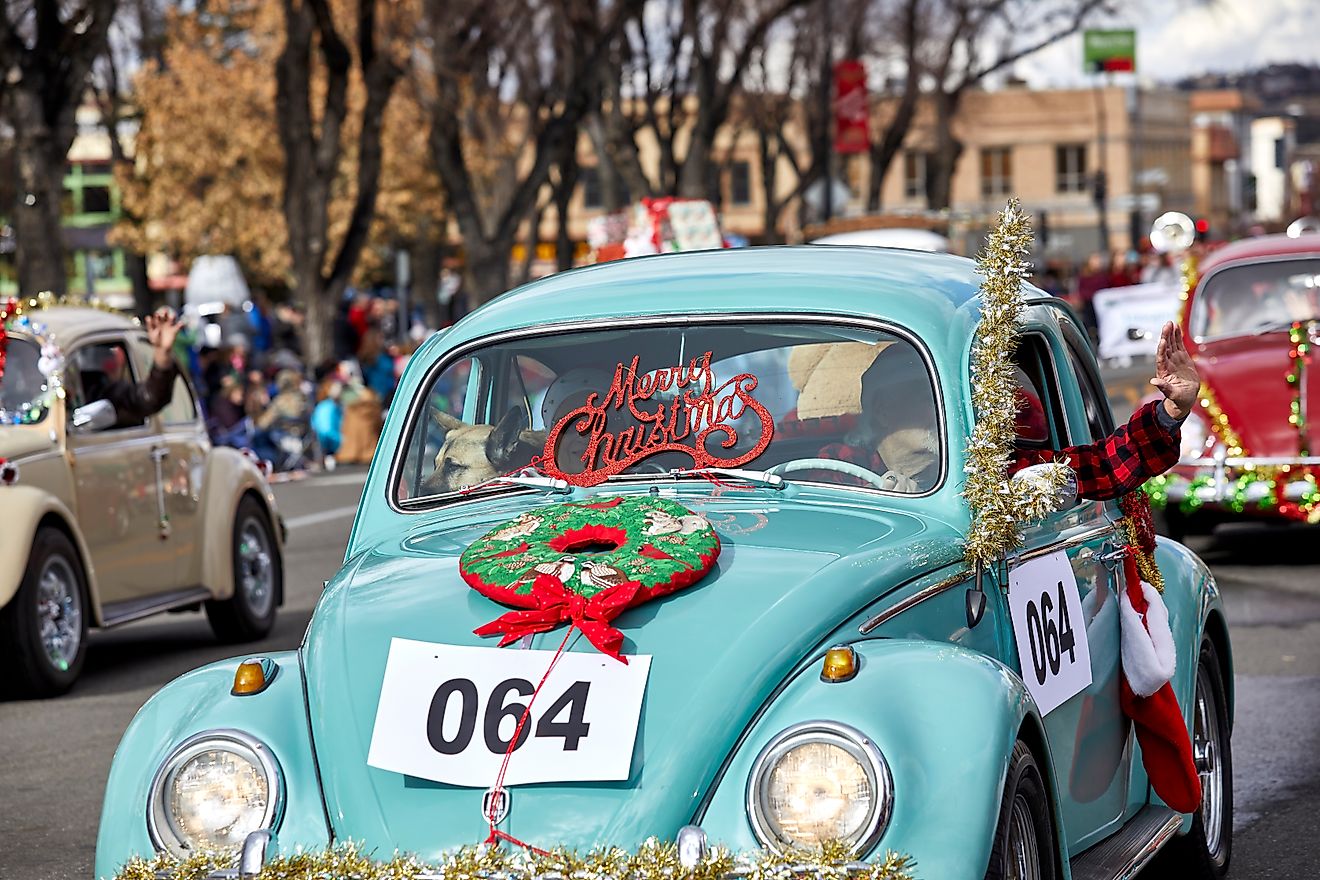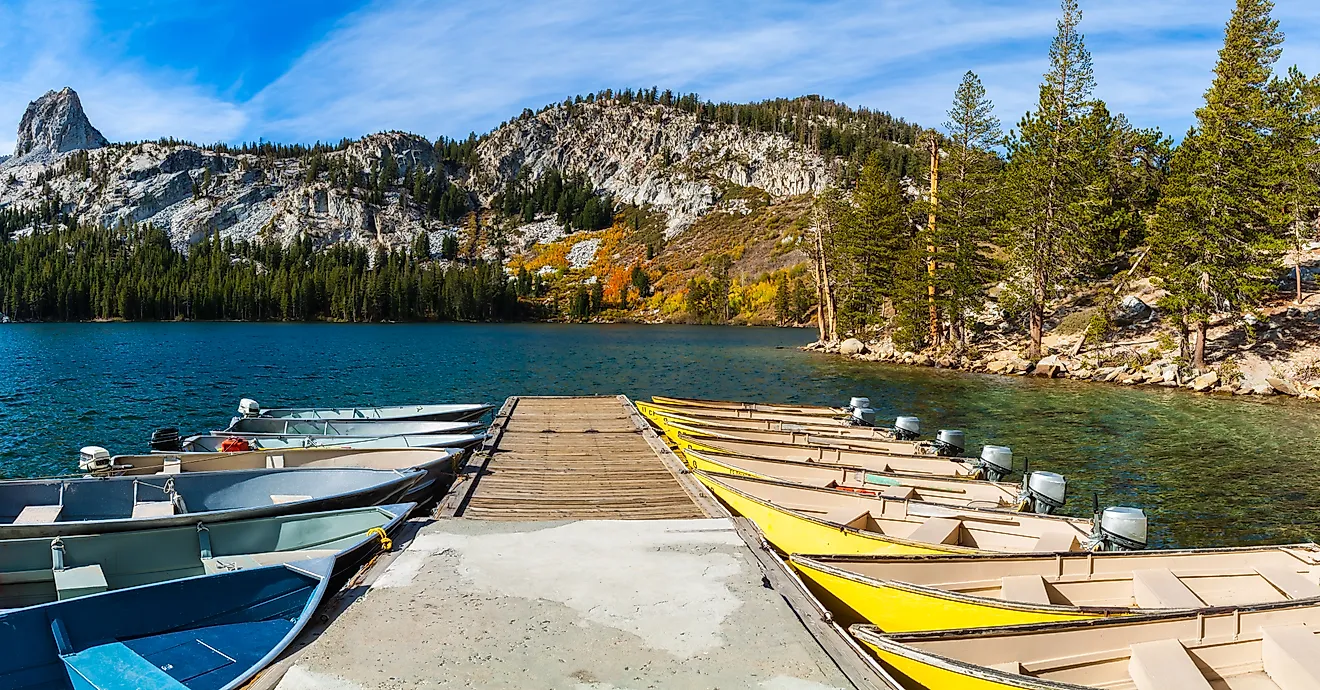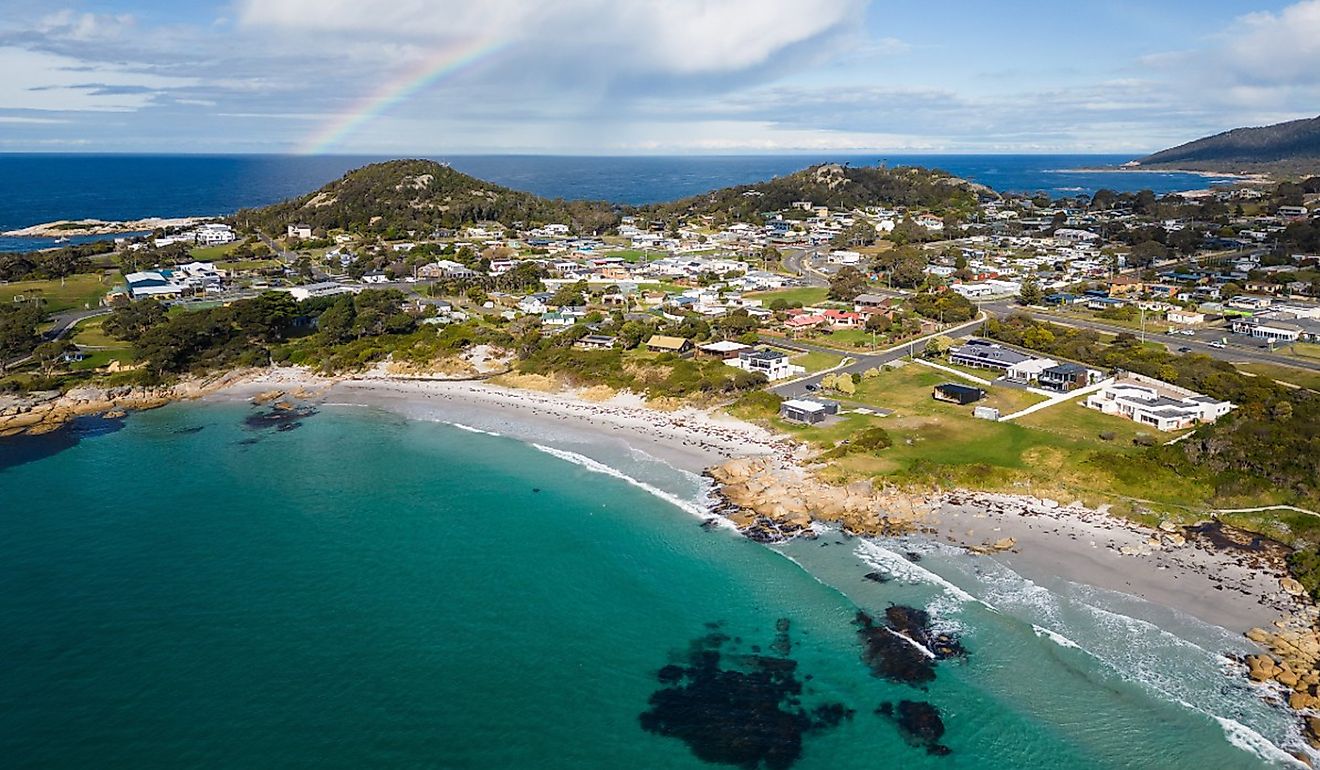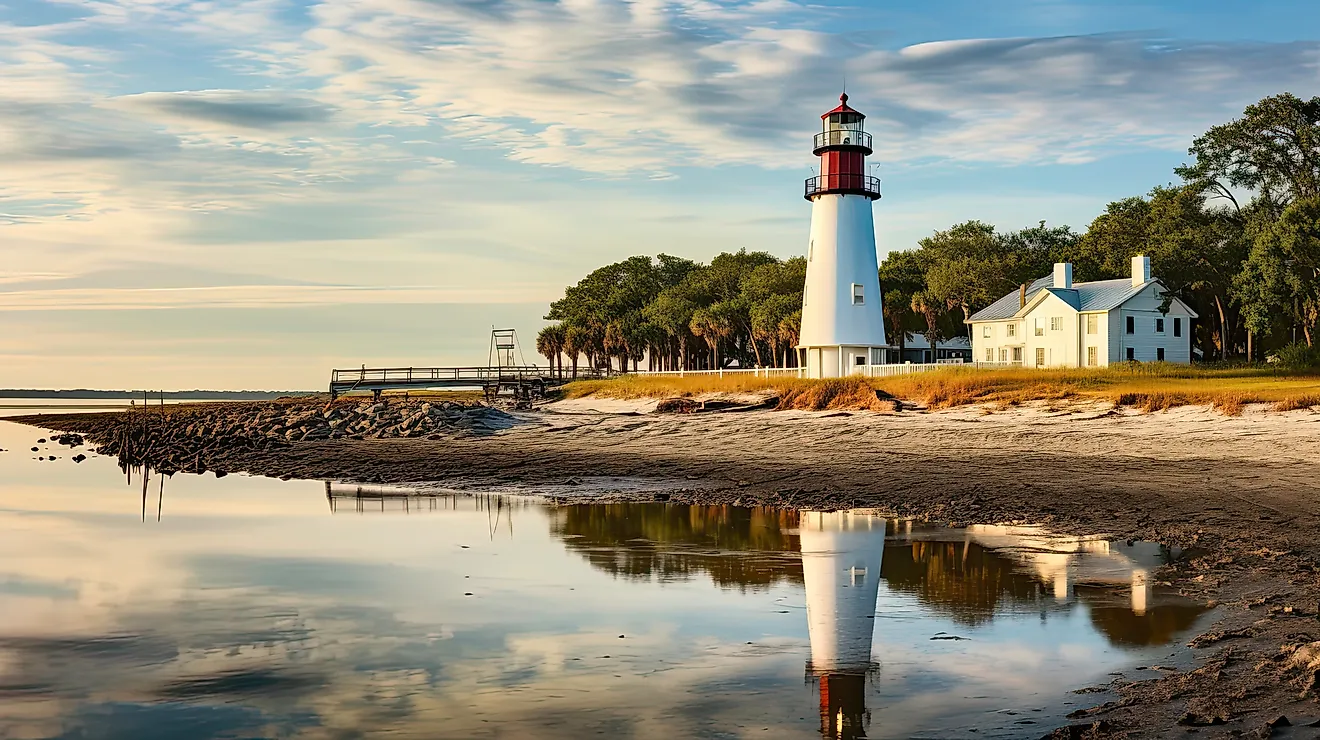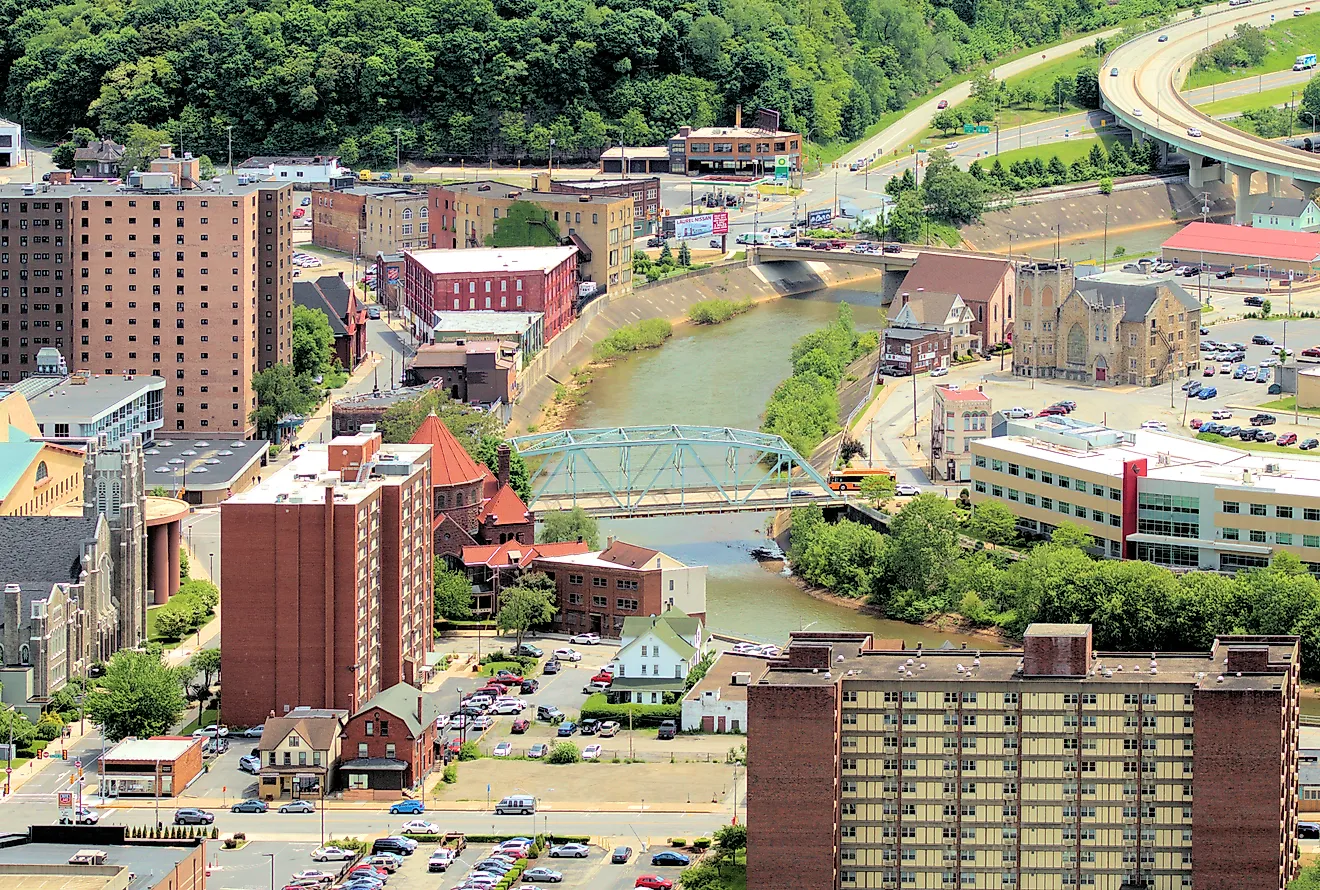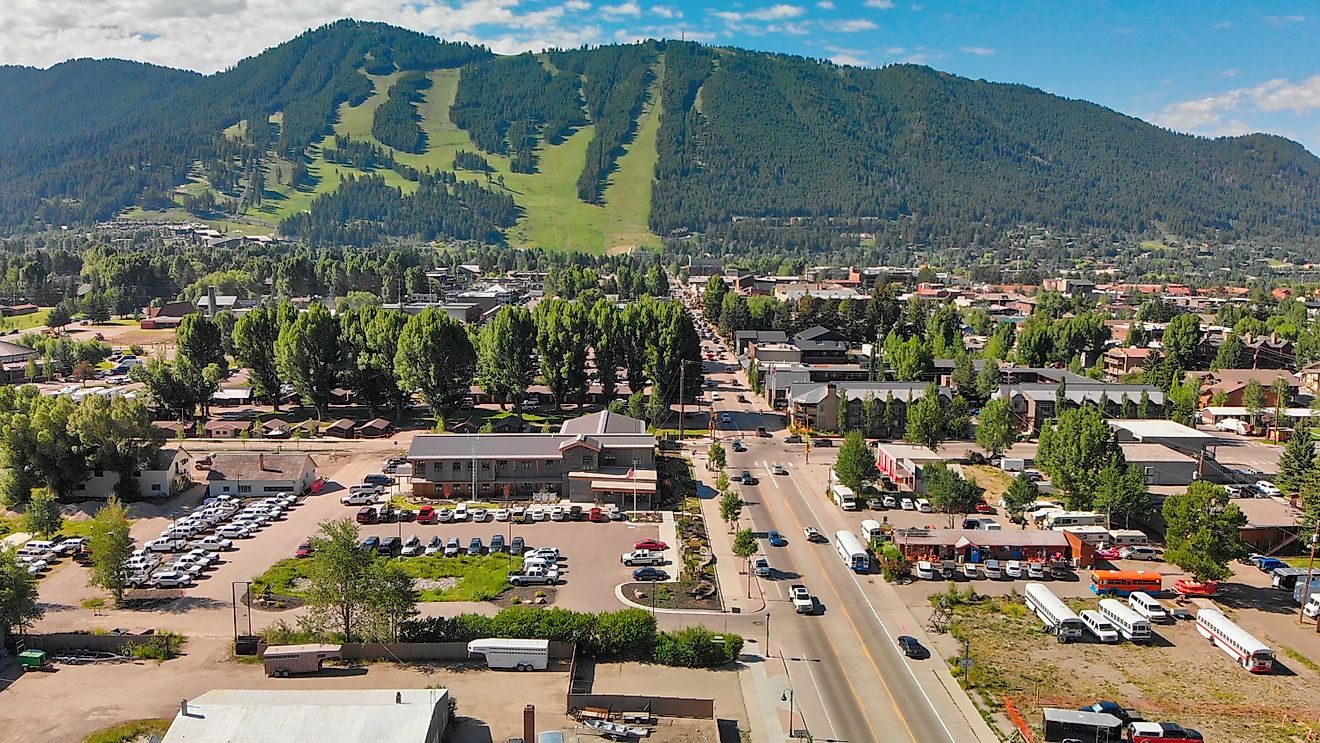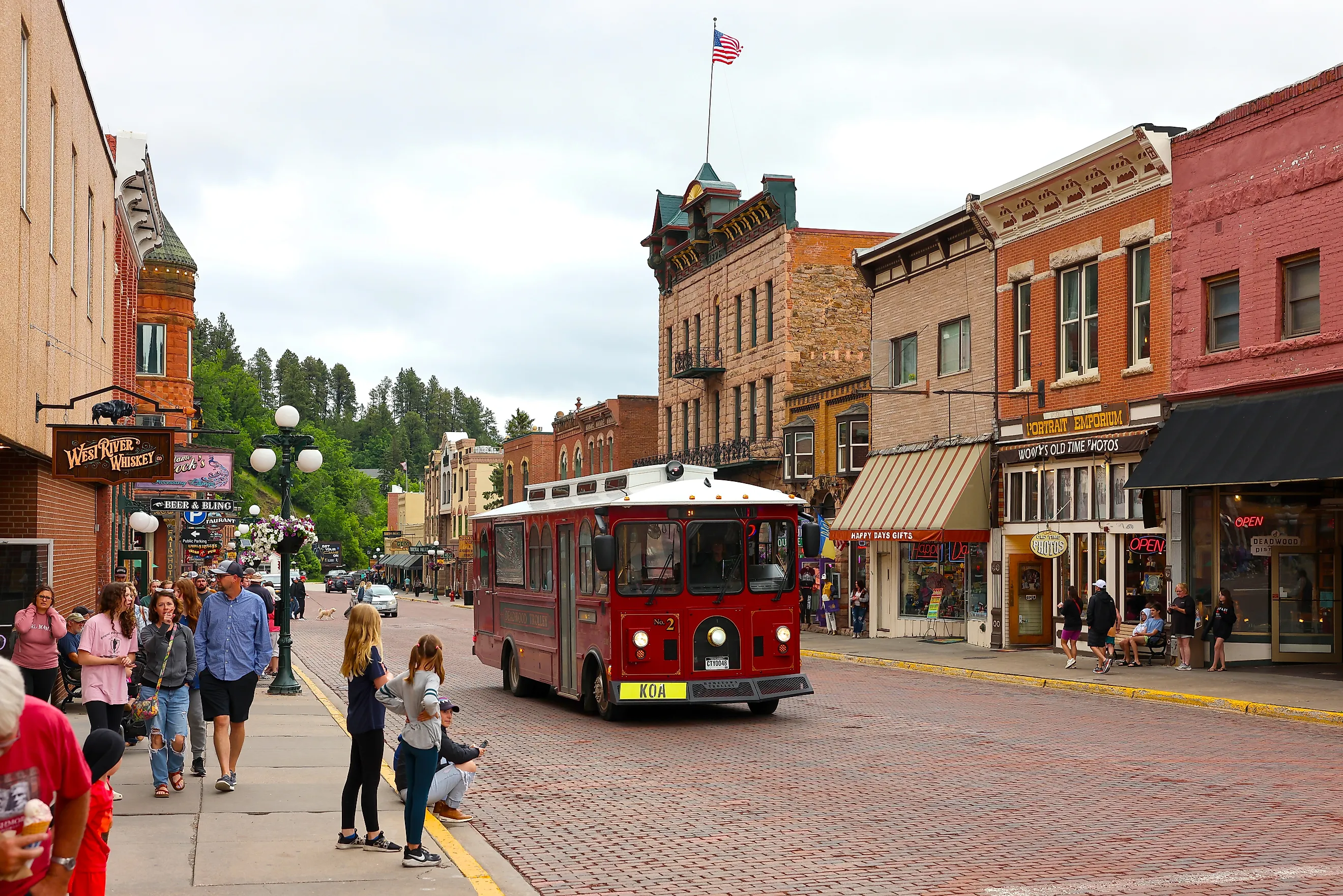
8 Main Streets Where South Dakota Comes Alive
South Dakota’s Main Streets are more than just downtown strips—they’re the heartbeat of each town, shaped by history, local pride, and a touch of the unexpected. From former gold rush settlements to prairie outposts and college towns, these streets tell the stories of the people who built them. Whether you’re browsing local shops, grabbing a bite at a hometown café, or stepping into a quirky museum, each Main Street offers its own kind of experience. Some are rooted in mining and railroads, others in art, agriculture, or good old-fashioned small-town hospitality. Here are eight Main Streets across South Dakota where the past meets the present—and where small-town life still thrives.
Deadwood

Deadwood’s Main Street has never played by the rules—and that’s part of its magic. Established in 1876 during the height of the Black Hills Gold Rush, this was a town built on grit, gold, and gambling. Main Street was once the stomping ground of Wild Bill Hickok, whose final poker hand—aces and eights—was dealt in a saloon steps from where visitors now stroll. The Wild West spirit still lingers in the air, and from the moment you step onto the sidewalk, you can feel it in your bones.
You can explore the Adams Museum, filled with gold rush relics and tales of infamous outlaws, or walk the quiet hillside of Mount Moriah Cemetery, where Wild Bill and Calamity Jane rest under weathered headstones. The Days of ’76 Museum captures frontier life with historic wagons, firearms, and period clothing, while the many casinos and saloons housed in vintage structures keep Deadwood’s spirit of chance alive. With the many annual festivals, like Deadwood Jam, the town experiences an eclectic, vibrant aura that delights visitors and residents alike.
The town nearly lost its historic look after a fire in the 1980s, but a wave of preservation efforts—ironically funded in part by legalized gambling—helped bring it all back. Now, Main Street is both a tribute to the past and a place where it still feels very present. It’s easy to get caught up in the stories, whether you’re peeking through museum glass or tossing a few coins in a slot machine.
Hill City
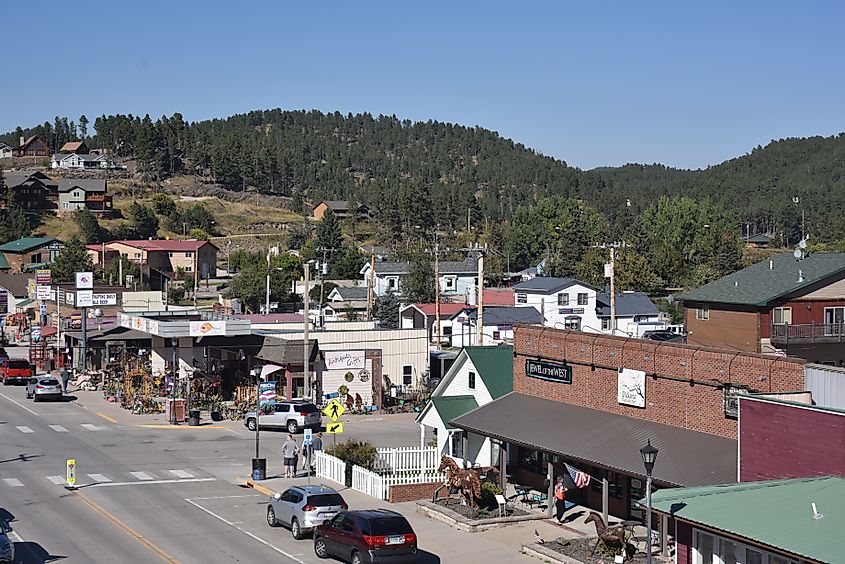
Hill City’s Main Street may be small, but it packs in a lot of personality—and a fair bit of history, too. Nestled in the heart of the Black Hills, Hill City got its start in 1876 as a mining settlement, making it one of the oldest towns in the region. Main Street still reflects its 19th-century roots, with rustic wood and stone storefronts lining both sides of the street. But what makes this downtown feel special is how much life thrives in just a few short blocks.
You can start at the South Dakota State Railroad Museum, where the region’s rail history comes to life, then step next door to catch a ride on the vintage 1880 Train, a steam-powered journey through the Black Hills.
Art lovers will feel right at home here. The Jon Crane Gallery features detailed watercolor landscapes that capture the spirit of the prairie and mountains, while other shops along the strip showcase locally made pottery, jewelry, and woodwork. When you’re ready for a break, stop into Alpine Inn, a beloved local spot famous for its filet mignon and old-world décor.
Even though Hill City is small, its Main Street carries a sense of purpose. It’s a place where stories and tall tales evolve over coffee, where art and nature collide, and where the past and present sit comfortably side by side.
Lead
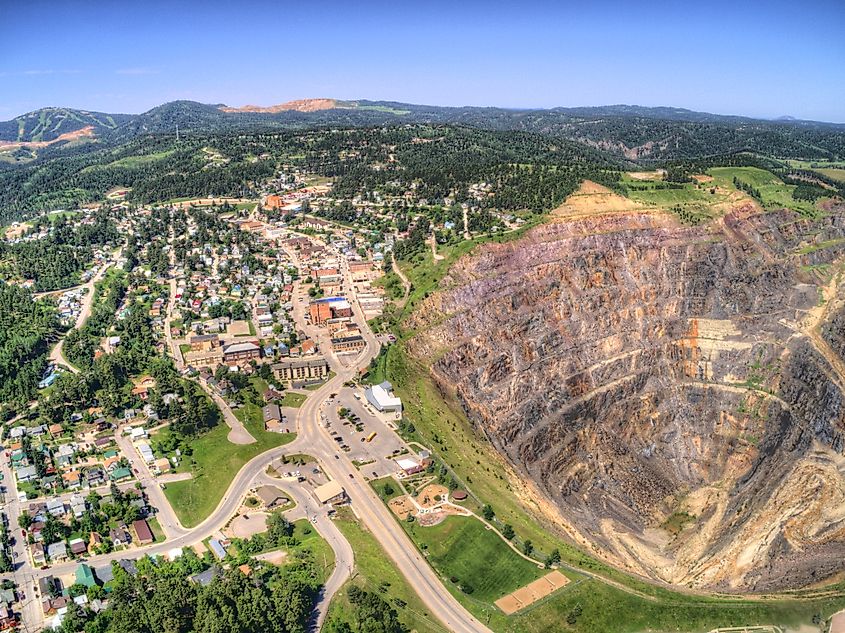
If you walk the Main Street of Lead (pronounced "Leed"), it will tell the story of a town built on gold—literally. Established in the late 1870s, Lead rose alongside the massive Homestake Mine, which became the largest and deepest gold mine in the Western Hemisphere. For generations, the mine shaped life here, and its influence is still visible in the sturdy brick buildings and steep streets of downtown.
Today, Main Street reflects both the town’s mining legacy and its creative energy. One of the best places to start is the Sanford Lab Homestake Visitor Center, perched at the edge of the old open cut. From the deck, you can gaze down into the massive pit and explore exhibits that blend science and history. Just a few blocks away, the Black Hills Mining Museum lets visitors step into the boots of early miners with hands-on exhibits and historic gear. And you can’t miss the Historic Homestake Opera House, where performances and events still bring the community together much like they did more than a century ago.
Main Street comes to life during Gold Camp Jubilee Days, Lead’s annual Fourth of July celebration. The festival features a mining-themed parade, fireworks, and live music that fills the downtown with energy. It’s a town that’s proud of where it came from, and Main Street is the perfect place to experience both the grit and the warmth that define Lead.
Custer
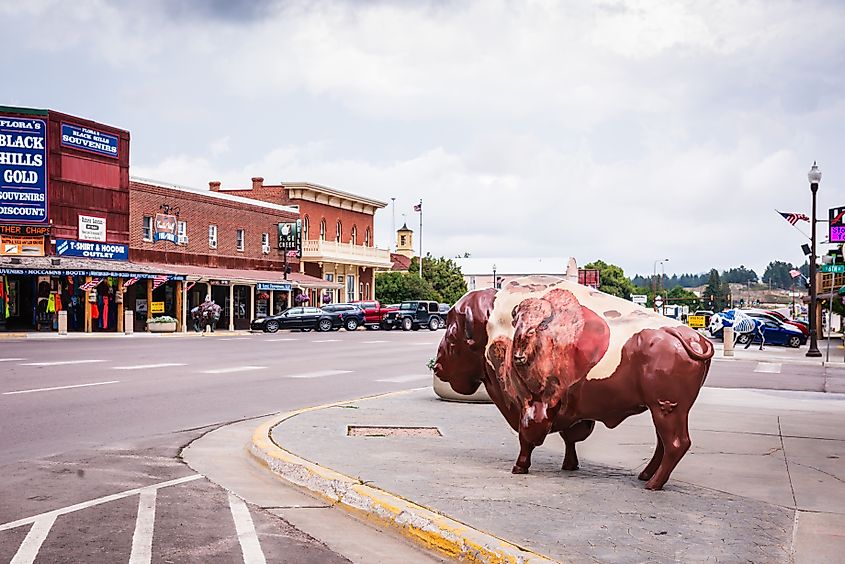
Custer feels like a slice of the Old West with a laid-back, outdoorsy twist. Founded in 1875 after the discovery of gold in nearby French Creek, Custer is the oldest town established by European Americans in the Black Hills. Its Main Street still reflects that frontier spirit—with wood-trimmed storefronts, American flags flapping in the breeze, and a walkable strip that mixes rugged history with a modern welcome.
The town may enjoy the stunning wilderness surrounding it, but there’s plenty to do right in the heart of downtown. Stop by the 1881 Courthouse Museum, where exhibits detail the early days of gold prospectors, homesteaders, and Native American history in the region. Just across the street, the Custer County Candy Company offers homemade fudge and sweets, perfect for a quick treat between strolls.
For a meal with a view and some serious regional flavor, grab a table at the Buglin’ Bull Restaurant and Sports Bar, known for its bison burgers and rooftop seating that’s ideal on a summer afternoon. Whether you’re hiking nearby trails or window shopping in town, Custer’s Main Street offers a relaxed place to land with just the right amount of personality.
Sturgis

Sturgis might be known for roaring engines and leather jackets every August—but the rest of the year, it’s a surprisingly relaxed place with deep military roots and a proud hometown spirit. Founded in 1878 as a supply town for nearby Fort Meade, Sturgis has always been a gathering place, whether for soldiers, ranchers, or the thousands of bikers who ride in for the annual rally.
The architecture here reflects that no-nonsense heritage—solid, simple buildings lining a compact Main Street that stretches just a few blocks. At the center of it all is the Sturgis Motorcycle Museum & Hall of Fame, located in the town’s former post office. It’s packed with vintage bikes, memorabilia, and stories tracing the evolution of American motorcycling.
For a slower pace, step into Loud American Roadhouse, a restaurant and bar that’s become a year-round favorite—not just for bikers. They’re known for their chislic (a South Dakota specialty of cubed, seasoned meat) and host live music throughout the week. Just down the block, Sturgis Coffee Company offers a quiet corner to recharge, with strong espresso and cozy seating.
And when August rolls around, that’s where the town revs up during the Sturgis Motorcycle Rally, one of the largest and most famous of its kind in the world. Sturgis’s Main Street is a small downtown that knows how to make a big impression, and not just during Rally week.
Vermillion
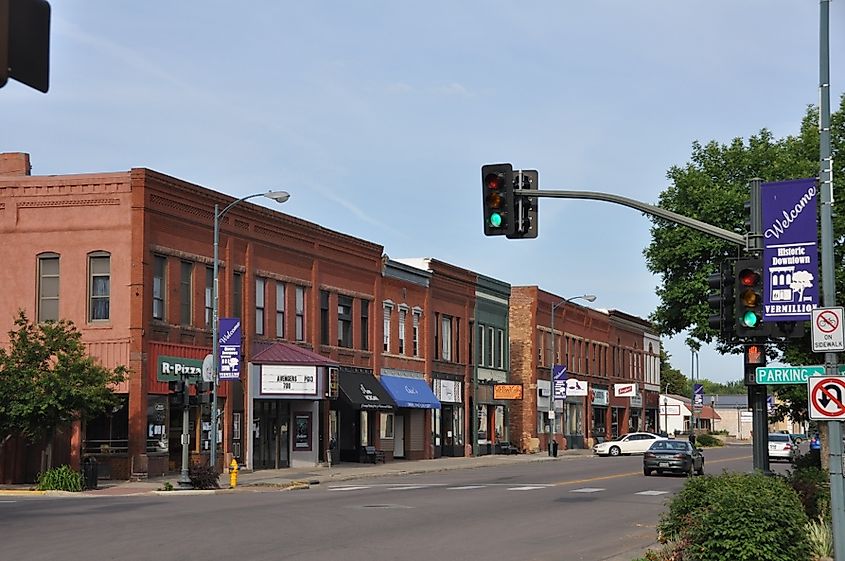
Vermillion’s Main Street is a vibrant mix of history, culture, and college-town energy tucked into South Dakota’s southeast corner. Founded in the 1850s along the Missouri River, Vermillion grew around river trade and agriculture, but its real heartbeat came with the University of South Dakota, established in 1862. That presence still shapes Main Street today, where 19th-century buildings meet bookstores, coffee shops, and a lively arts scene.
Café Brulé offers comfort food with flair—think bourbon-glazed meatloaf and house-made desserts—all served in a sunny, relaxed space that fills quickly on weekends. For something a little more creamy, step up to the Cow and Spoon, a local favorite ice cream shop. If you’re in a browsing mood, USD Charlie's Store is a charming bookstore run by the University of South Dakota.
Each fall, Main Street takes on a festive atmosphere during Dakota Days, the university’s homecoming celebration. The event features a parade, tailgating, live music, and local pride that spills from campus into every corner of downtown. Whether you’re visiting for a quiet weekend or caught up in the energy of Dakota Days, Vermillion’s Main Street offers a welcoming mix of old and new, tradition and creativity—all with a personal touch.
Spearfish
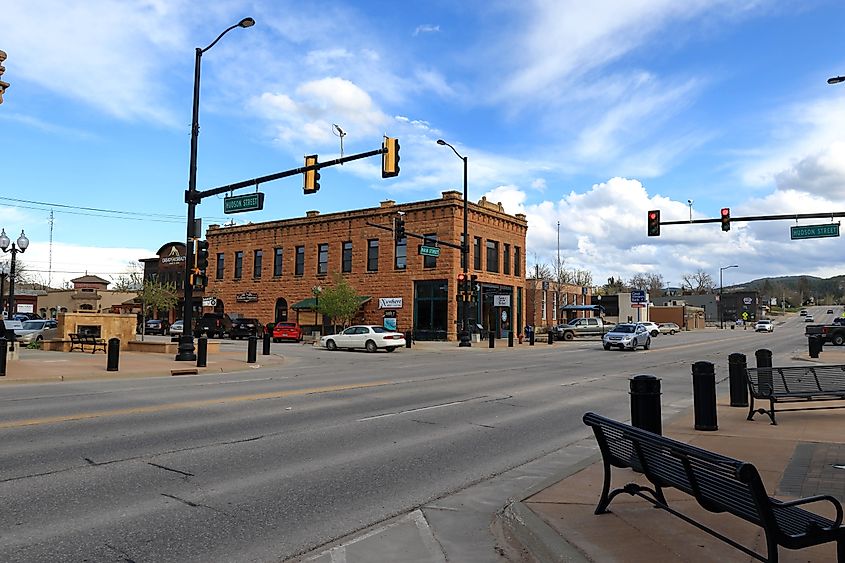
This small town's Main Street offers a scenic blend of culture, history, and natural beauty that makes it one of the most inviting downtowns in the state. Established in 1876 at the base of the Black Hills, Spearfish started as a farming and lumber hub supporting nearby gold mining towns. Its Main Street still carries that early energy—historic buildings, a close-knit layout, and easy access to the great outdoors.
Begin at the Matthews Opera House & Arts Center, a beautifully restored 1906 theater that now serves as both a performance venue and community art gallery. It’s the cultural heart of downtown, offering everything from stage plays to local exhibitions. Just down the block, the Good Earth Natural Foods store has been a staple for decades, offering locally sourced groceries and healthy grab-and-go lunches. While the D.C. Booth Historic National Fish Hatchery isn’t technically on Main, it’s just less than a mile away, and it is absolutely worth a visit. With free admission, scenic walking trails, and underwater viewing windows, it’s a quiet gem tucked into a wooded canyon.
Spearfish comes alive every July during Festival in the Park, held in nearby Spearfish City Park. When the festival takes place, you can expect a lively time downtown as the community comes together. With its historic architecture, friendly vibe, and unbeatable access to the outdoors, Spearfish’s Main Street is both a destination and a jumping-off point for everything the town has to offer.
Lemmon
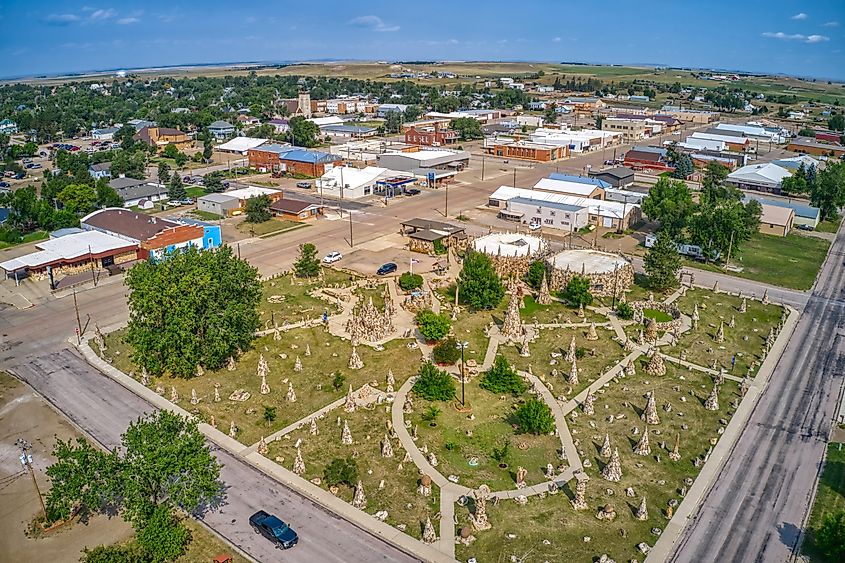
Lemmon’s Main Street stands proudly on the edge of the South Dakota-North Dakota border, where prairie skies stretch wide and creativity runs deep. Founded in 1906 by cattleman George Ed Lemmon, the town quickly became a ranching center for the surrounding plains—and its Main Street still carries that frontier spirit, with early 20th-century buildings and an unmistakable small-town rhythm.
The most eye-catching attraction downtown is the Petrified Wood Park, built during the 1930s using thousands of pieces of fossilized wood and stone. It’s like walking through a prehistoric art installation, with towering spires, a castle, and even a wishing well—all steps off Main.
A short stroll away, the Grand River Museum dives into the local ranching and Native history of the region, with fossils, cowboy gear, and rotating exhibits that give depth to Lemmon’s past. When you’re ready for something more unusual, visit the Kokomo Gallery and Art Studio, featuring John Lopez's interesting creations and bronze sculptures, made from the metal of discarded farm equipment.
Lemmon throws its biggest party during the Boss Cowman Days, a July celebration honoring the town’s ranching roots. Parades, rodeos, dances, and fireworks turn Main Street into a festive gathering place. With its blend of rural pride, curious attractions, and neighborly energy, Lemmon’s Main Street feels like an authentic slice of the western prairie, and that is precisely what it wants to be.
